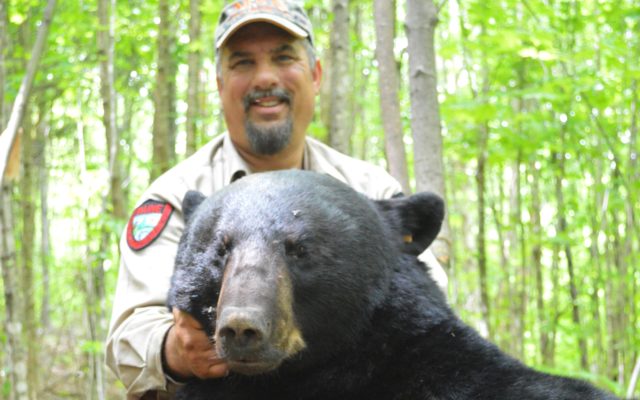
Maine bear harvest in 2020 was the 5th highest on record
By John Holyoke, Bangor Daily News Outdoors Editor
The state’s lead bear biologist said a dry summer, a lack of natural foods, and increased hunter participation all contributed to the highest bear harvest in 15 years in 2020, and the fifth-highest total of bears tagged since the species was first classified as a big game animal in 1969.
In all, 3,853 bears were tagged by hunters in 2020. That total is the highest since 3,921 bears were taken in 2004. The harvest record was set in 2000, when 3,951 bears were taken. This year’s total was also topped in 2001 (3,903 bears) and 2003 (3,900).
Before 1969, bears were hunted, but because they were not considered big game animals, hunters were not required to register them.
“It was an extremely dry year, and a poor natural food year, so we had a better response [by bears coming] to bait,” said Jennifer Vashon, the state black bear biologist for the Maine Department of Inland Fisheries and Wildlife. “Also, our permit sales for bears were up. It was probably a combination of a pandemic effect — people going out and spending more time — and we had a couple of press releases telling people that if they’d never bear hunted, this would be a good year to try it.”
Vashon said a record number of resident (698) and nonresident (98) bear trapping licenses were sold. In addition, 5,041 residents bought licenses to hunt over bait, marking the first year since 2004 that more than 5,000 of those permits were sold. Nonresident bait permits hit 5,284, the highest level since 2007.
Biologists estimate the state’s bear population at 35,000, and that total has been growing by 2 to 4 percent a year for the last 15 or 20 years, as hunters have fallen short of harvesting enough bears to stabilize the population, the goal of Maine’s management plan.
Vashon was pleased that the bear harvest finally inched into the acceptable range — 10 to 15 percent of the bear population — that would help keep the population in check.
“That’s really good for the state because we’ve been below harvest objectives since 2005. Every time we have a high harvest, that’s something we’re excited about,” she said. “Our harvest objectives are basically to keep our population where it’s at.”
If the bear population remains stable, that means there’s enough bears to satisfy both hunters and those who want to see an occasional bear in the wild, without leading to an undesirable rate of bear conflicts with humans.
Don’t expect the high bear harvest of 2020 to carry into this year, though.
“Even though we had a high [harvest] year, we’ll probably have a lower harvest this year, because natural foods tend to alternate [in abundance] from year to year,” Vashon said.
Vashon said that a lack of natural food and an increase in work-at-home Mainers also likely led to an increase in nuisance bear complaints in 2020.
As of the end of October, there had been 723 nuisance bear complaints. Vashon said she didn’t expect many more complaints to have come in during November and December, but that total was quite high. The record for most bear complaints was 833 in 2012, while the lowest number recorded was 377, in 2008.
In a final note, Vashon said hunters who shot bears in 2019 and who have been waiting to learn the age of those animals won’t have to wait much longer. The Montana lab that determines the age of the teeth taken from Maine bears shut down for a time due to the pandemic, but Vashon said the data should be available on the department’s website in the coming days.
The teeth from 2020’s bears are still being collected by the DIF&W.